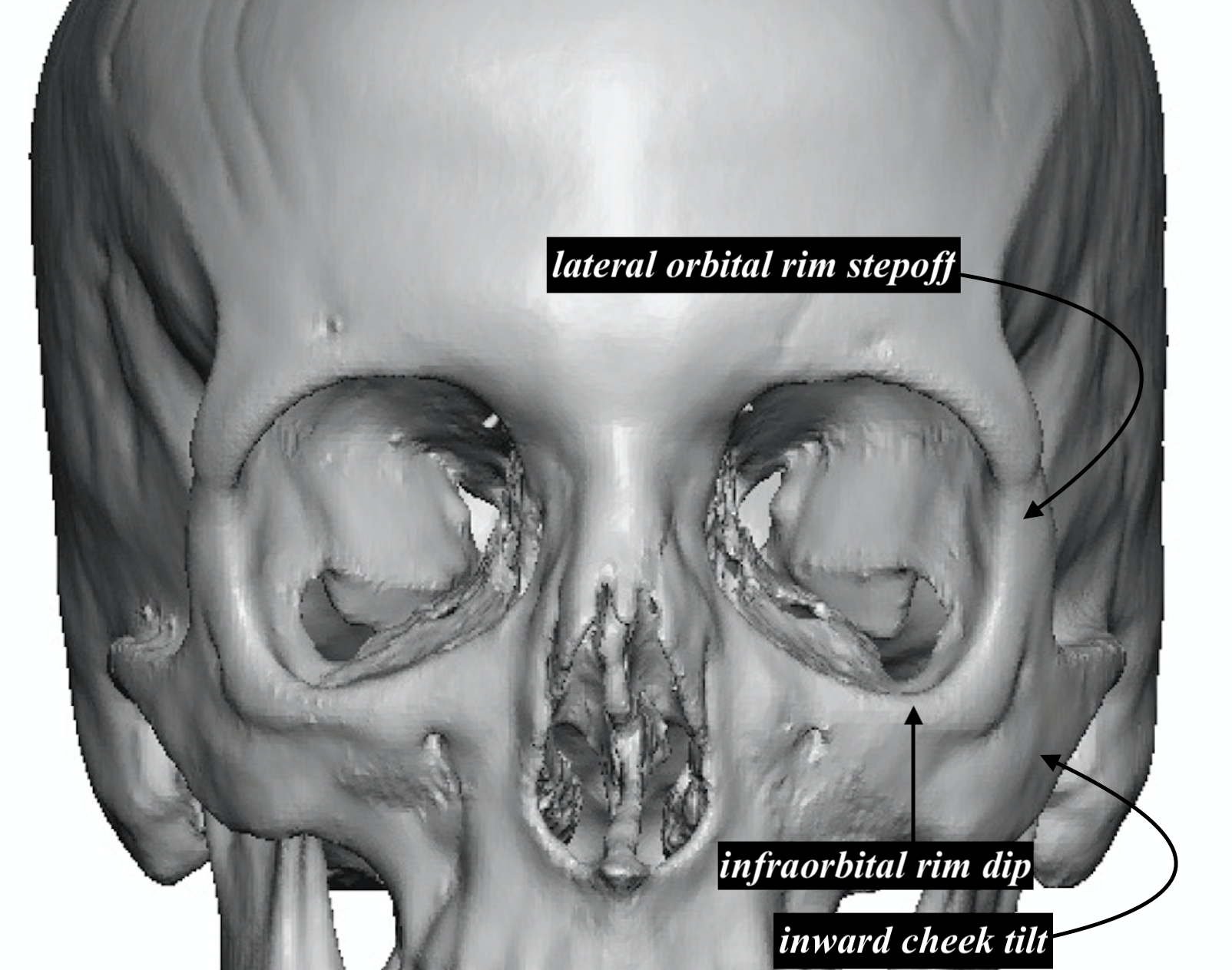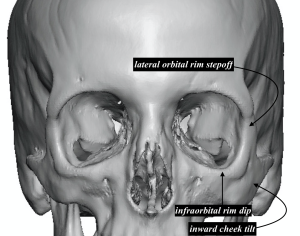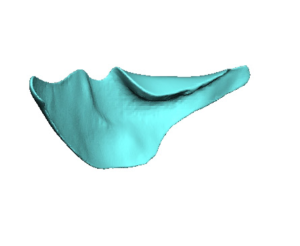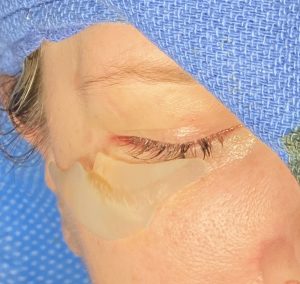The eyelids provide aesthetically important shape to the eye area and has a greater influence on the appearance of this part of the face than the eyeball itself. Their horizontal coverage of the eyeball creates how much of the eyeball is seen particularly scleral show. The amount of scleral show determines how wide open the eyes appear as well as some form of expression. Notice how different the eyes appear when the outer corner of the eyes are down slanting vs upturned.
The horizontal axis of the lower eyelid is highly influenced by the shape of the infraorbital bone below it. Having seen many 3D CT scans for infraorbital rim implants when a slopping lower eyelid exists with a low outer eye corner position there will be a noticeable dip in the lateral infraorbital rim. To no surprise there is an anatomic relationship between the shape of the lower eyelid and the bone underneath it. This has been known in hemifacial and Treacher-Collins craniofacial deformities for over fifty years. Thus it should be no surprise that it exists in aesthetic eyelid deformities as well.
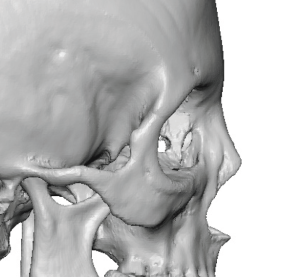
The relevance of understanding these bony correlations with the external lower lid-cheek appearance is that it provides an important element to improve when corrections are undertaken. In very mild aesthetic lid deformities the bony deficiencies may be left alone and can be overcome with soft tissue procedures. (lateral canthoplasties, lower lid spacer grafts) But as the lower lid position worsen (increased scleral show) addressing the bone support has value. This explains why the addition of standard tear trough implants to the soft tissue procedures is so commonly used today when sagging lower eyelids are being treated.
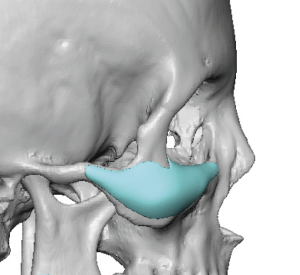
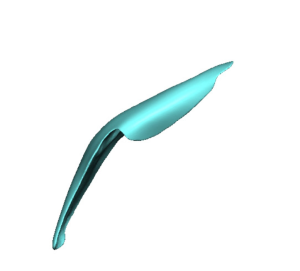
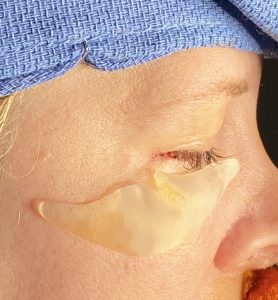
Dr. Barry Eppley
World-Renowned Plastic Surgeon

